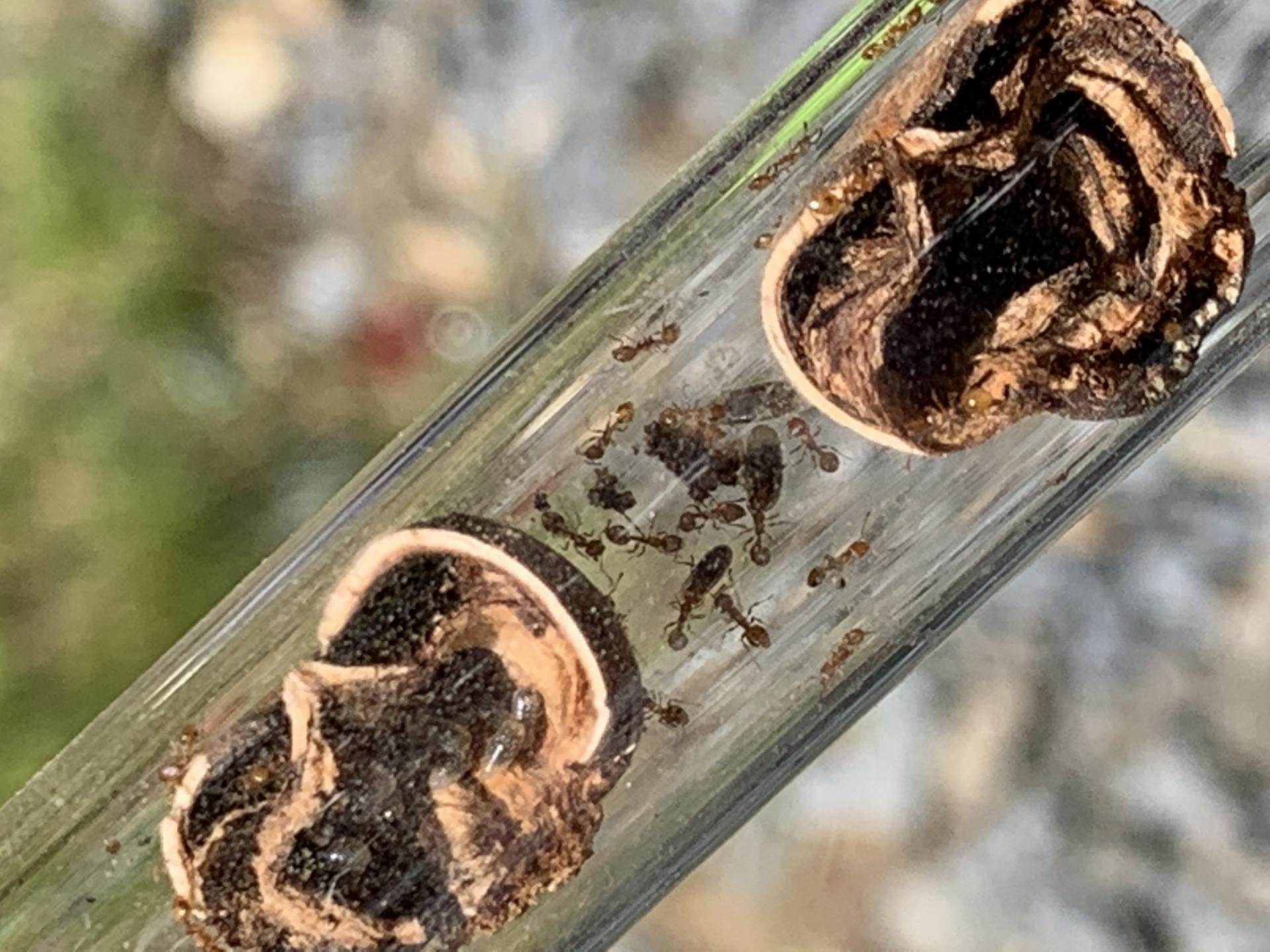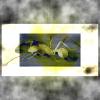First off, don't use ladybugs, as their hemolymph contains toxins that may harm your ants. Instead, try using bits of crickets or other, common insects such as roaches or beetle larvae, preferably captive breed as they will not contain any pesticides or toxins. A good rule of thumb is that if the insect has bright, flashy colors, it is likely toxic and can therefore harm or even kill your ants. Secondly, the way I tend to extract an ant colony from any sort of nut is to very carefully tap the contents of the nut into a tray or container (I prefer using a large, wide container as opposed to a tall one as it's far easier to work with) coated with a barrier, baby powder should work fine and I never have any issues with using it short term, and with a soaked cotton ball for hydration of the ants, though Temnothorax may not need this as they are very hardy when it comes to humidity, and actually prefer drier settings. After the contents are emptied, you can then begin to carefully deconstruct the nut with hard forceps or a pocket knife. I cannot stress enough how careful you just be during this process, as one slip up could mean the death of many workers, brood items, or even the queen/s. When any extra ants are uncovered, gently tap them into the container and be sure to get any and all brood items, which may need extra coaxing with a paintbrush or some featherweight forceps as brood, especially eggs and larvae, have the tendency to stick to just about anything, either by means of small, grippy hairs or a sticky coating. Once all ants and brood have been emptied into the container, the nut pieces can be discarded and the ants moved into a proper formicarium. Oh and by the way, I'm pretty sure your ants are Temnothorax ambiguus.
![]()

















